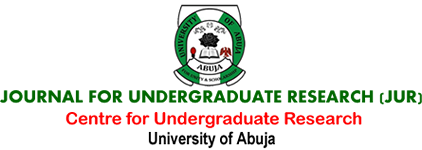Assessment Of Concentration Of Heavy Metals In Raw And Roastedmeat
(suya) On The University Of Abuja Campuses And Its Environs
Author(s) : Mobolaji Abdulateef, Ejeh Sunday Augustine & Usende Ifukibot Levi
ABSTRACT:
Heavy metals toxicity is a major health burden worldwide. This study was Hundertaken to assess heavy metals concentrations of raw and commercial roasted meat (suya) in the campuses of University of Abuja, Nigeria and its environ. A total of 32 samples comprising of 16 suya samples and 16 raw meat samples were collected in Ziploc bags and used for this study. All samples were collected for a period of two weeks and stored in desiccators at ambient temperature before analysis using atomic absorption spectrophotometer. Arsenic, cadmium, chromium, iron, mercury, lead, vanadium and zinc were analyzed. The results revealed that the concentrations (mg/kg) of arsenic, cadmium, chromium and mercury in raw meat samples were below the detectable limit. It was also found that the concentrations of iron, zinc and lead although detected in raw meat samples, were below maximum permissible limit for heavy metals in meat as approved by World health Organization (WHO). A similar pattern was observed in the concentrations of iron and zinc for suya meat. Notably, it was found that the concentrations (mg/kg) of arsenic, cadmium, chromium, mercury, lead and vanadium in suya samples were above maximum permissible limit approved for roasted meat by WHO, posing a potential health risk to individual consuming these products in these areas. These findings highlight the importance of scrutinizing not only raw materials but also the entire food preparation chain. Continuous monitoring, awareness campaigns, and regulatory measures are indispensable in safeguarding public health and ensuring safety of the population.
KEYWORD(S):
Heavy metals, Raw and Suya meat, Maximum permissible limit, World Health Organization, Atomic Absorption Spectrophotometric.

